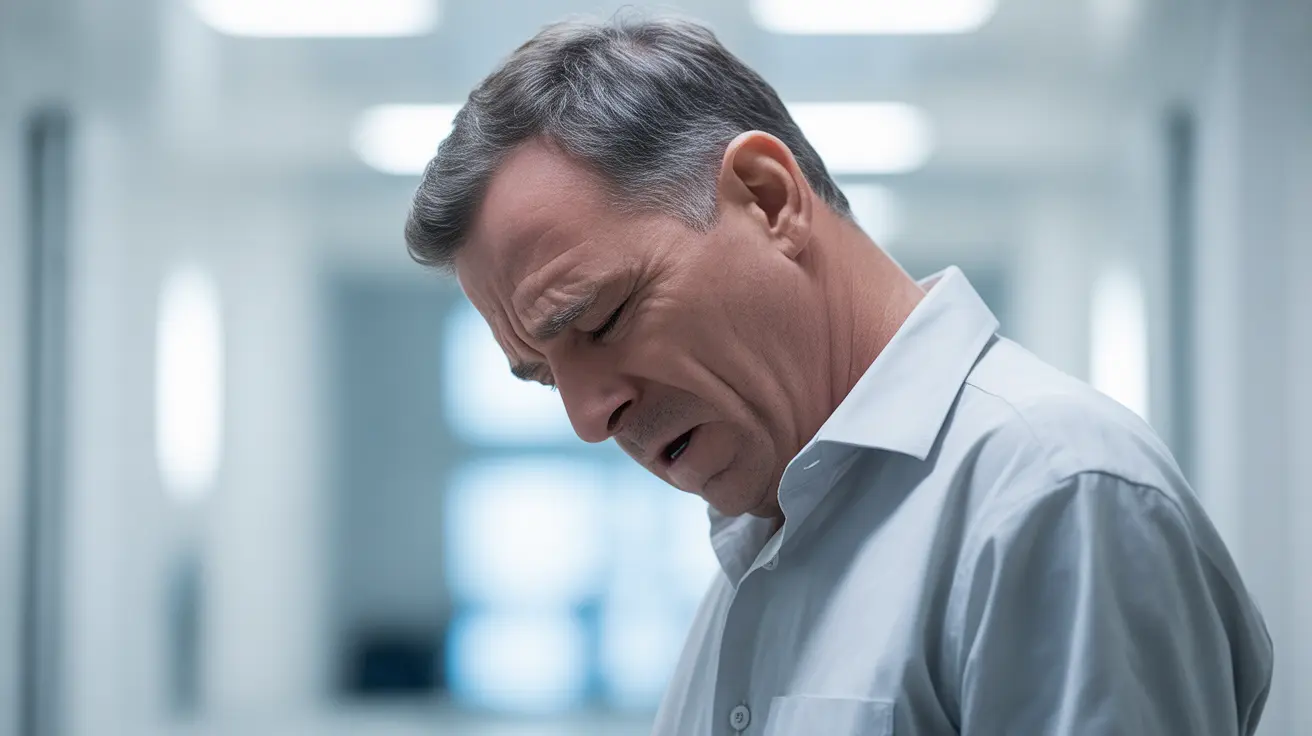When someone experiences a stroke, every minute counts. Being able to quickly recognize what a stroke looks like can mean the difference between life-altering consequences and a better recovery outcome. Understanding the visual and physical signs of a stroke is crucial for everyone, as immediate medical attention can significantly improve the chances of survival and reduce long-term disability.
This comprehensive guide will help you identify the visible signs of a stroke and know exactly what steps to take if you suspect someone is having one. Learning these signs could help save a life – possibly of someone you love.
Visual Signs of a Stroke
When a stroke occurs, several visible changes can appear suddenly in a person's appearance and behavior. The most notable signs include:
- Facial drooping on one side
- Uneven smile
- Eye problems or vision changes
- Confusion or disorientation
- Physical imbalance or stumbling
Facial Changes During a Stroke
One of the most recognizable signs of a stroke is facial asymmetry. When a stroke occurs, the muscles on one side of the face may become weak or paralyzed, causing a noticeable droop. The person may have difficulty smiling evenly, and one side of their mouth may appear to sag or drift downward.
Vision and Eye Changes
Visual disturbances can be a critical indicator of a stroke. Someone experiencing a stroke might suddenly:
- Have blurred or double vision
- Lose vision in one or both eyes
- Experience difficulty focusing
- Show uneven pupil sizes
Physical Signs and Body Movement
Stroke symptoms often affect how a person moves and controls their body. Watch for these physical signs:
- Weakness or paralysis on one side of the body
- Difficulty raising both arms equally
- Unsteady walking or loss of balance
- Sudden coordination problems
Speech and Communication Changes
Changes in speech patterns are another crucial indicator of a stroke. Look for:
- Slurred or garbled speech
- Difficulty finding words
- Inability to repeat simple phrases
- Confused or incoherent speech
The FAST Method for Stroke Recognition
The FAST acronym is a simple yet effective tool for identifying stroke symptoms:
- Face: Ask the person to smile. Is one side drooping?
- Arms: Can they raise both arms and keep them up?
- Speech: Is their speech slurred or strange?
- Time: If you observe any of these signs, it's time to call 911 immediately.
Immediate Actions to Take
If you suspect someone is having a stroke, take these immediate steps:
- Call emergency services (911) right away
- Note the time symptoms first appeared
- Keep the person still and calm
- Do not give them food or drink
- Stay with them until help arrives
Frequently Asked Questions
What are the sudden signs and symptoms of a stroke to look for in the face, arms, and speech?
The primary signs include facial drooping on one side, weakness or inability to raise one or both arms, and slurred or confused speech. These symptoms typically appear suddenly and should prompt immediate medical attention.
How can vision changes or loss indicate a stroke and what kinds of visual symptoms should raise concern?
Vision changes during a stroke may include sudden blurred vision, double vision, complete vision loss in one or both eyes, or difficulty focusing. Any sudden visual disturbance, especially when combined with other stroke symptoms, requires immediate medical evaluation.
What does the FAST acronym stand for and how can it help identify a stroke quickly?
FAST stands for Face (facial drooping), Arms (weakness), Speech (difficulties), and Time (to call 911). This acronym helps people remember the most common stroke signs and emphasizes the importance of quick action.
What should you do immediately if you suspect someone is having a stroke based on their appearance or behavior?
Call 911 immediately, note the time symptoms began, keep the person calm and still, and stay with them until emergency services arrive. Don't give them anything to eat or drink, as this could cause choking.
Can a stroke cause one side of the face to droop, and why does this happen?
Yes, facial drooping occurs because a stroke can damage the neural pathways that control facial muscles. This typically affects one side of the face due to the way the brain controls different body parts, with each hemisphere controlling the opposite side of the body.




